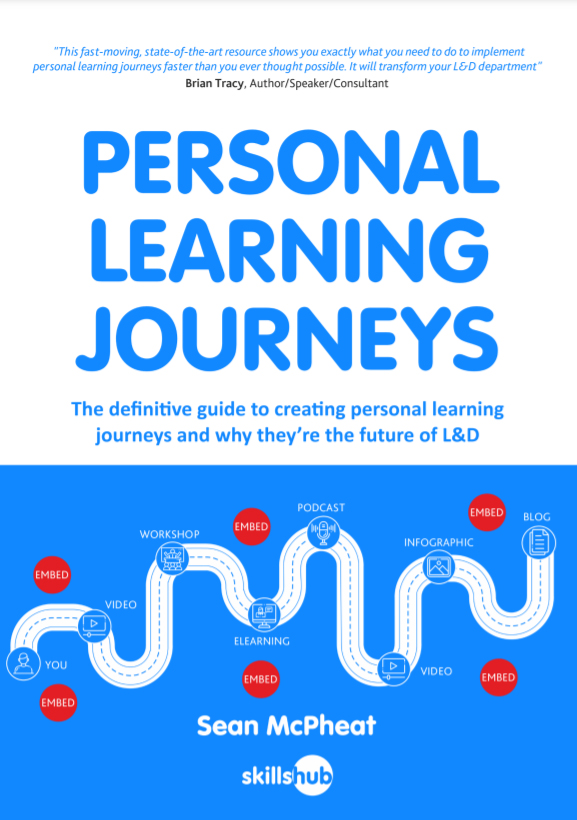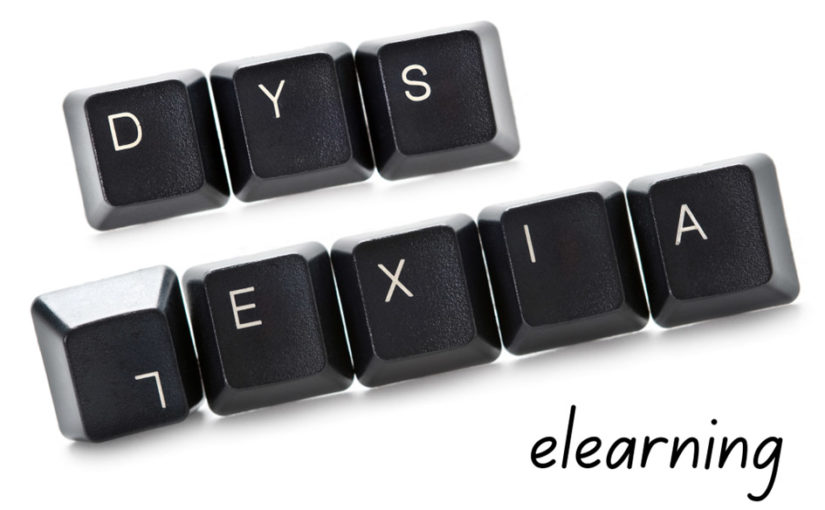
Educational success is often contingent on clear, realistic, and well-defined aims – and this is where SMART learning objectives come in.
As a methodology first created for business management, SMART has since been adapted across numerous fields, including education. SMART objectives offer a structured framework to help educators design effective learning goals that are clear, focused, and reachable. They ensure that learners can understand what is expected from them, fostering a more efficient and meaningful learning experience.

What are SMART Learning Objectives?
The SMART framework breaks down learning objectives into five key characteristics: Specific, Measurable, Achievable, Relevant, and Time-bound. Each characteristic plays a pivotal role in creating a comprehensive learning goal that is practical, attainable, and aligned with overall educational targets.
George T. Doran first proposed the SMART framework in the November 1981 issue of Management Review. In his initial formulation, Doran’s A stood for “assignable,” meaning a task that can meaningfully be given to a specified individual. His R stood for “realistic,” a concept now captured by the latter-day “achievable” component.
In its current form, the framework offers a set of criteria that can be applied to any learning methodology to ensure that its content and assessment systems are fit for purpose.
Let’s break down each term into its definition and significance in an educational context:

Specific
The learning objective should be well-defined, clear, and unambiguous. Instead of setting a broad or generic goal, educators should aim to specify what the learner will achieve upon successful completion of the course or lesson.
Another way to think of this is to consider what the learner will be able to do or understand, having completed the course, that they couldn’t have done or understood beforehand. How will it change their work life, skillset, or understanding?

Measurable
The objective must include criteria for measuring progress and outcome. This ensures that the learner’s progress can be tracked, and the effectiveness of the learning process can be evaluated.
With eLearning content, there are numerous ways to measure progress and comprehension, including completion percentages, internal quizzes, and final assessments. Various interactive tools allow for gamifying the process of measurement with puzzles and challenges that can be inserted into the course material to maintain interest and gauge understanding.

Achievable
The learning objective should be realistic and attainable. While ambitious goals can be motivational, they should not be so challenging as to be unattainable, which might lead to frustration or discouragement.
Stepped courses with modules for complete beginners, intermediate-level learners and experts can help ensure that the student completes a course at a level they can manage. Courses should avoid being too lengthy or complicated, or the end goal can begin to seem unreachable.
Break down your course materials into slides, lessons, and modules to motivate students to persist, and reward completion stages with badges, congratulations, or other markers of success.

Relevant
The objective should align with the learner’s broader educational or professional goals, ensuring the learning process is meaningful and applicable to their overall development. This is particularly important in mandatory training courses such as fire and safety training, first aid or DEI courses.
By tailoring courses to the day-to-day situations your students and employees will face, you will increase engagement.
If a course has an in-person element, make sure it incorporates time for students to discuss how each lesson relates to their own life or work. Lively discussions will follow, and the relevance of the topic will hit home.

Time-bound
Each objective should have a defined timeline, offering a clear deadline for when the learning goal should be achieved. This enhances motivation and allows progress tracking over time.
Run many trials of your courses and time how long it takes the average student to complete the various modules, then tweak the content and design accordingly. Experience has shown that an individual module should take no longer than 15 minutes to complete.
Another good idea is to give students a realistic notion of how long each part of the course will take to finish. This will allow them to allocate sufficient time for completion, without having to interrupt their flow.

Step-by-Step Guide to Writing SMART Learning Objectives
Creating SMART learning objectives involves six critical steps – an initial definitional stage and then one step for each concept in the SMART framework. By following these steps methodically, you’ll ensure your courses are well-designed and fit for purpose.
Step 1: Identify Desired Outcome(s)
Before setting an objective, identify the desired learning outcomes of the lesson or course. What should learners know or be able to do by the end? It’s a good idea to specify this up front to set expectations.
When you’ve devised the course, you can run tests and examine the achieved outcomes. Do they match your intentions when designing the course? If not, a rethink may be required.
Step 2: Be Specific
Use action verbs to precisely define what the learner will achieve. Clearly state the scope of the objective to eliminate ambiguity.
Here’s an example of a poorly written course objective:
“Students will gain an understanding of the basics of social media marketing.”
And here’s that objective written with more specificity (with action verbs in bold):
“Students will appreciate the different audiences of Facebook, Instagram, Twitter and TikTok, understand the marketing objectives that can be achieved using each one, and will practise using some marketing techniques to make best use of each medium.”
Step 3: Ensure Objectives are Measurable
Define clear, quantifiable criteria to evaluate progress and success. You might establish various methods of assessment, including quizzes, projects, or discussions.
Be very transparent upfront about what constitutes an excellent, good, or acceptable “pass mark.” While some courses pass or fail only (driver’s tests, for example), others have gradations of achievement.
It can be difficult to quantify comprehension of a complex topic with multiple choice questions, so if it is vital that students gain an in-depth knowledge of a complex subject, then it is better to include a project, in-person assessment or written essay.
Without some sort of measurable outcome, there’s a danger students can complete courses as “lip service” to the notion of education, without really learning anything.
Step 4: Ensure Objectives are Achievable
Consider the resources available and the learners’ current capabilities when setting objectives. This ensures that the goals are challenging but within reach.
It can be helpful to run a “pre-assessment” test or questionnaire to gauge current comprehension level. If you do so, make sure you stress that there is no good or bad level of achievement; you are simply trying to identify a place to begin.
Match your course materials to the age, reading level and/or educational level of your students. Don’t use overly complicated language when simpler terms will do.
Step 5: Ensure Objectives are Relevant/Personalised
Align the learning objectives with the overall goals of the course and the individual learner’s needs. This ensures the learning process is valuable and beneficial for the learner.
Online systems allow for a high degree of learning personalisation of courses, including offering modules in a range of languages or including various optional extras.
As well as making the course content fit students’ needs, you need to make sure the outcomes match what they’ll be able to use in their employment or day-to-day lives.
For instance, if you were teaching a course in beer-making in a microbrewery setting, but most of your students were likely to work in commercial breweries, it would be wise to tailor the outcomes to include those very different environments.
Step 6: Establish Deadlines/Timeframes
Set clear deadlines for each objective. Balance the time constraints with the scope of the objective to ensure it’s feasible within the given timeframe. This may involve a degree of trial and error as you’re designing the course.
There’s little more frustrating than being told a course must be completed in one hour, only to find that its quizzes are so lengthy and challenging that it takes twice as long to finish.

Examples of SMART Learning Objectives
Here are examples of SMART objectives in different settings:
Classroom Setting
“In this semester, students will improve their writing skills by composing and revising at least three essays, with each essay receiving a score of 70% or higher.”
Note that there is room for variation in this objective – some students may complete three essays while others may do more. 70% is an ambitious but not unrealistic goal if your student intake has been pre-selected for basic literacy.
Online Courses
“By the end of this 20-hour online photography course, participants will produce a portfolio of ten high-quality photographs demonstrating mastery of advanced lighting techniques.”
This course may use advanced photo analytics to judge whether specific lessons about dynamic range, composition, colour, focus and subject choice have been adhered to and demonstrated.
What’s especially good about this objective is that it specifies the completion time (20 hours) and work volume (ten photos) very precisely.
Professional Development
“Within six months, team members will complete an advanced project management course, implement new strategies in their work, and show a 20% decrease in project overruns.”
Although the 20% overrun reduction may prove ambitious, it’s likely that the course organisers have researched the difference between the effect on deadlines of trained versus untrained teams.
“Within six months” is time-bound, but allows some wriggle room, for learners who can complete their coursework more quickly. The objective promises real professional and personal development.
Each of the above examples is specific, measurable, achievable, relevant, and time-bound.

Benefits of Using SMART Learning Objectives
Enhanced Focus and Clarity
SMART objectives provide clear and concise goals, aiding learners in understanding exactly what is expected. They ensure that a higher percentage of learners engage with course materials and see courses through to completion.
Improved Measurement and Assessment
Because they’re measurable, SMART objectives make progress tracking and outcome assessment easier and more effective. It becomes easier to demonstrate the efficacy of a course, and to identify places where materials can be improved in future iterations.
Increased Motivation and Engagement
Achievable and time-bound objectives motivate and engage learners by providing clear goals and a sense of urgency. They can foster a spirit of friendly rivalry too, as team members compete with one another to gain the best completion scores.
Common Mistakes to Avoid When Writing SMART Objectives
Here are some of the frequent pitfalls course creators face:
- Avoid vague or overly broad objectives that fail to clearly state what is expected from the learner. These will not inspire excitement and may lead to students feeling adrift as they work through the course materials.
- Avoid objectives without measurable criteria that offer no way to evaluate success. Neither the course creator nor the student is well-served by a course with no objective measure of achievement.
- Avoid irrelevant content that students won’t be able to incorporate within their lives or working environment. If elements add to completion time but don’t contribute to course objectives, the content should be left out.
- Lastly, steer clear of unattainable or unrealistic goals that may frustrate or discourage learners. This will reduce engagement and can cause you to receive poor reviews of your courses.

Strategies for Implementing and Monitoring SMART Objectives
Methods for effective implementation include:
- Incorporating objectives into lesson planning and making sure they are at the forefront when designing a course.
- Tracking progress and adjusting as necessary. Run numerous trials of your courses in the design stage, including participants at various levels of prior subject knowledge.
- Providing regular feedback and support to learners. Take stock at various points during your course, either with recaps (for an online course) or in-person discussions of “what we’ve learned so far.” This helps learners feel they’re keeping up.
SMART is Objectively Better
Creating SMART learning objectives plays an important role in enhancing educational effectiveness. It enables learners to understand expectations, focus their efforts, and measure their progress.
As an eLearning company, Skillshub is committed to creating efficient and impactful learning experiences.
We incorporate these principles into our learning modules, providing a well-rounded eLearning platform and approach that caters to each learner’s unique needs and abilities.
Join us today to elevate your learning experience!














